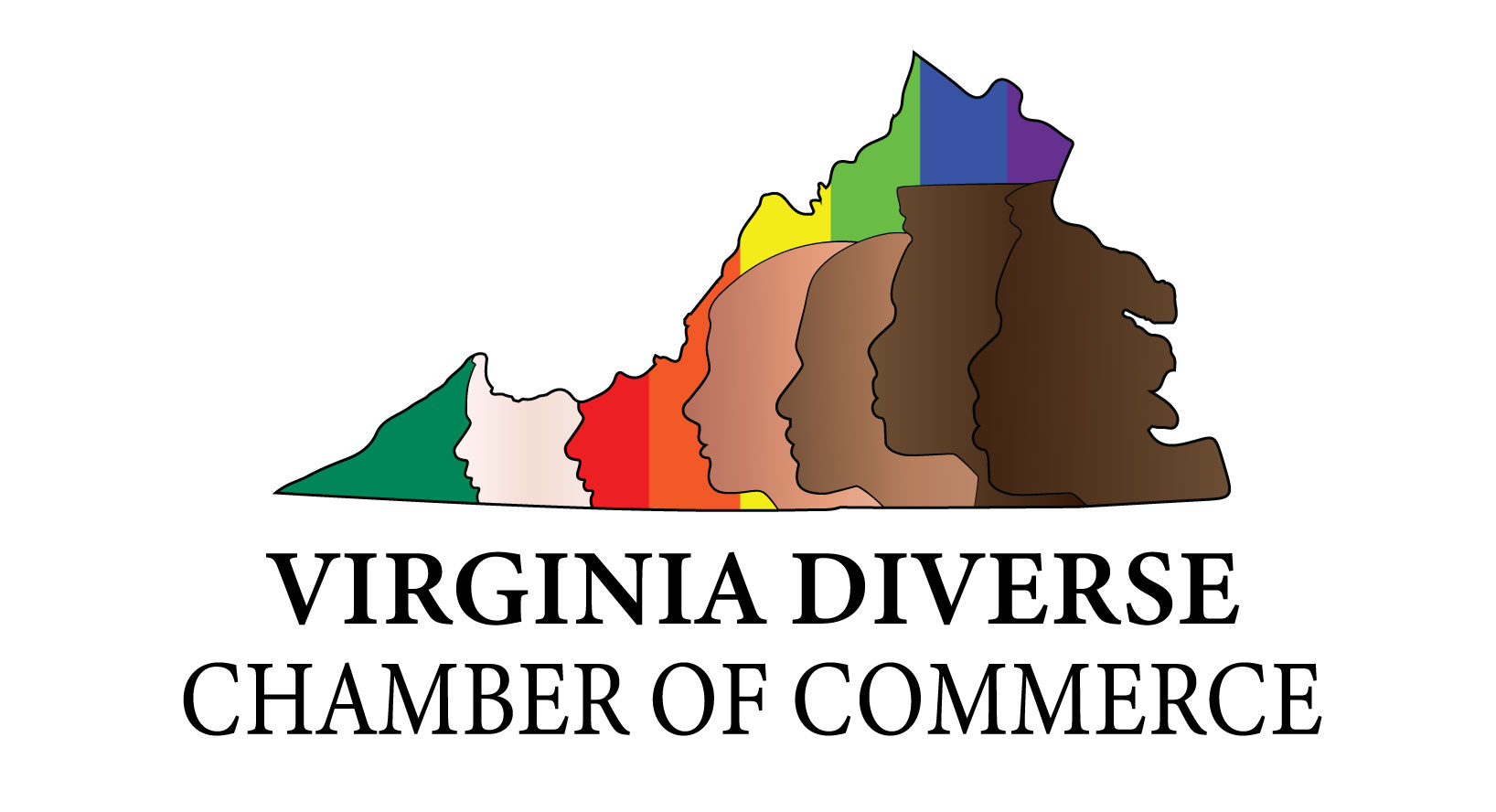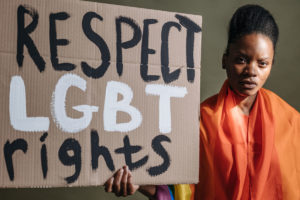Youth HIV/AIDS
In the United States, 20% of new HIV diagnoses in 2020 were among young people aged 13-24.
Getting tested for HIV is important for prevention since only 6% of high school students have ever been tested for HIV.
Youth Need to Know their HIV Status to Stay Healthy
Almost half of young people (aged 13-24) with human immunodeficiency virus (HIV) do not know they have it. For youth who test negative, testing services can connect them to HIV prevention resources. Youth who test positive can be connected to health services and take medicine to treat HIV.
Treating HIV means taking medicine to lower the amount of virus in the blood—so low that a test can’t measure it. This is the best thing to do to stay healthy.
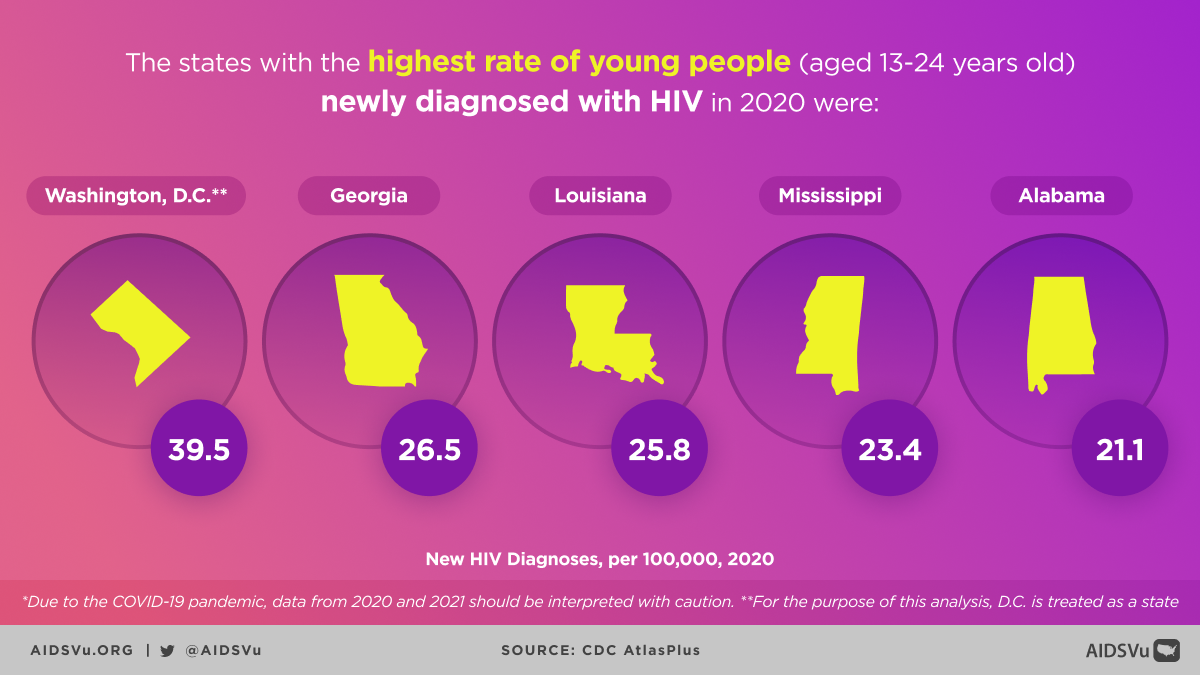
Sexual Risk Behaviors Can Lead to HIV, STDs, & Pregnancy
CDC data show declines in sexual risk behaviors among high school students from 2011 to 2021. Fewer students are currently sexually active. And fewer have ever had sex—down from 47% in 2011 to 30% in 2021.
However, many youth engage in health risk behaviors and experiences that can result in unintended outcomes. According to CDC data:
- Condom use is down. Condom use among sexually active students decreased from 60% in 2011 to 52% in 2021. This is a serious health risk for HIV and STDs.
- Substance use can lead to high-risk behaviors. When youth are under the influence of drugs or alcohol, they may engage in high-risk behaviors, such as sex without a condom or not taking medicine to prevent or treat HIV.
- Some youth are at higher risk. Some youth—including lesbian, gay, bisexual, and questioning (LGBQ+) youth—are at greater risk for negative health outcomes. For example, about 1 in 5 LGBQ+ students experienced sexual violence in the past year, compared to 1 in 10 of their heterosexual classmates. LGBQ+ students (21%) were also more likely to have ever used illegal drugs than heterosexual students (21%).
April 10 is National Youth HIV/AIDS Awareness Day (NYHAAD), a day to educate the public on the impact of HIV on youth, especially young people of color.
In 2021, despite efforts to reduce transmission, youth still accounted for more than 19% of all new HIV diagnoses nationwide.
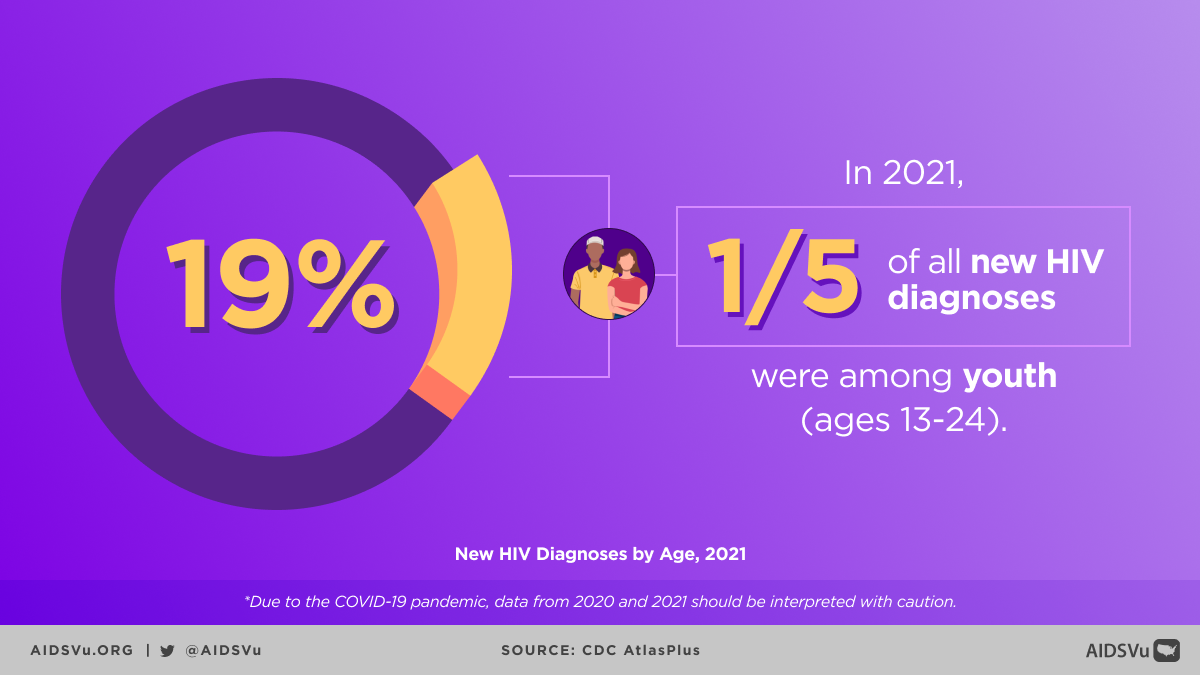
HIV disproportionately impacts Black youth. In 2021, 53% of new HIV diagnoses among youth were among Black people. The disparity is even more stark among young Black women—in 2020, over 61% of young women living with HIV were Black.
Pre-exposure prophylaxis (PrEP) is a valuable tool in HIV prevention – in 2021, young people under age 24 accounted for 19% of new HIV diagnoses but only 13% of PrEP users. In addition, young people face challenges in accessing and maintaining HIV treatment – only 81% of young people (aged 13-24) were linked to HIV care in 2021, the lowest rate of any age group.
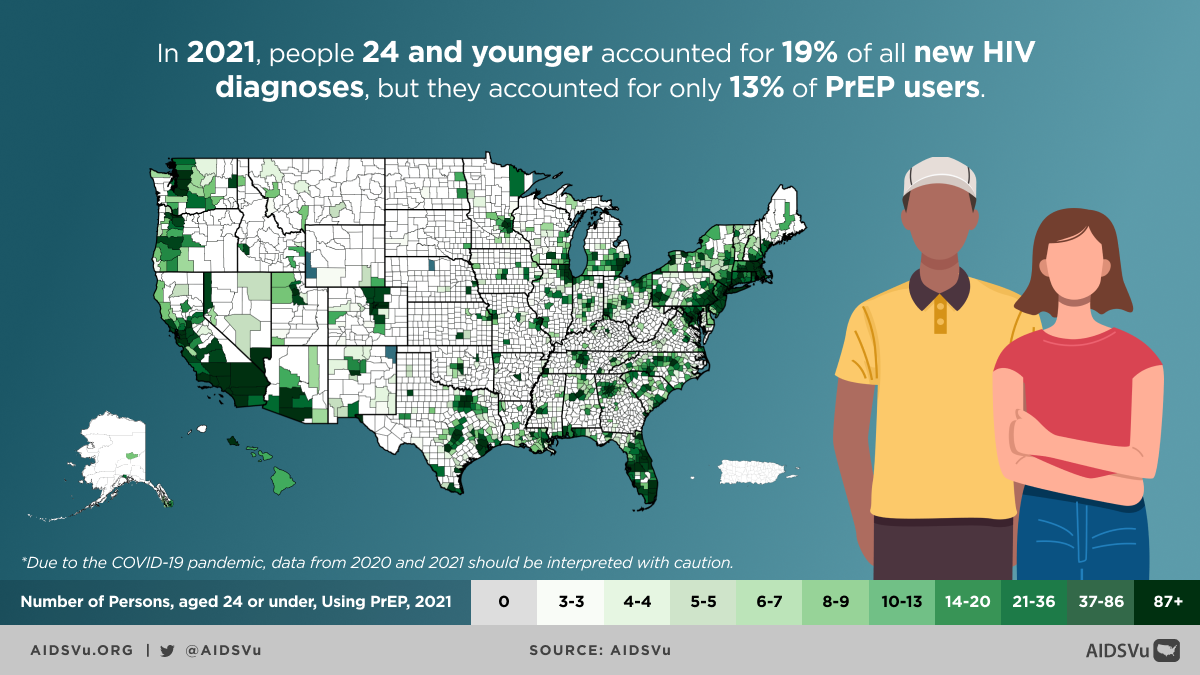
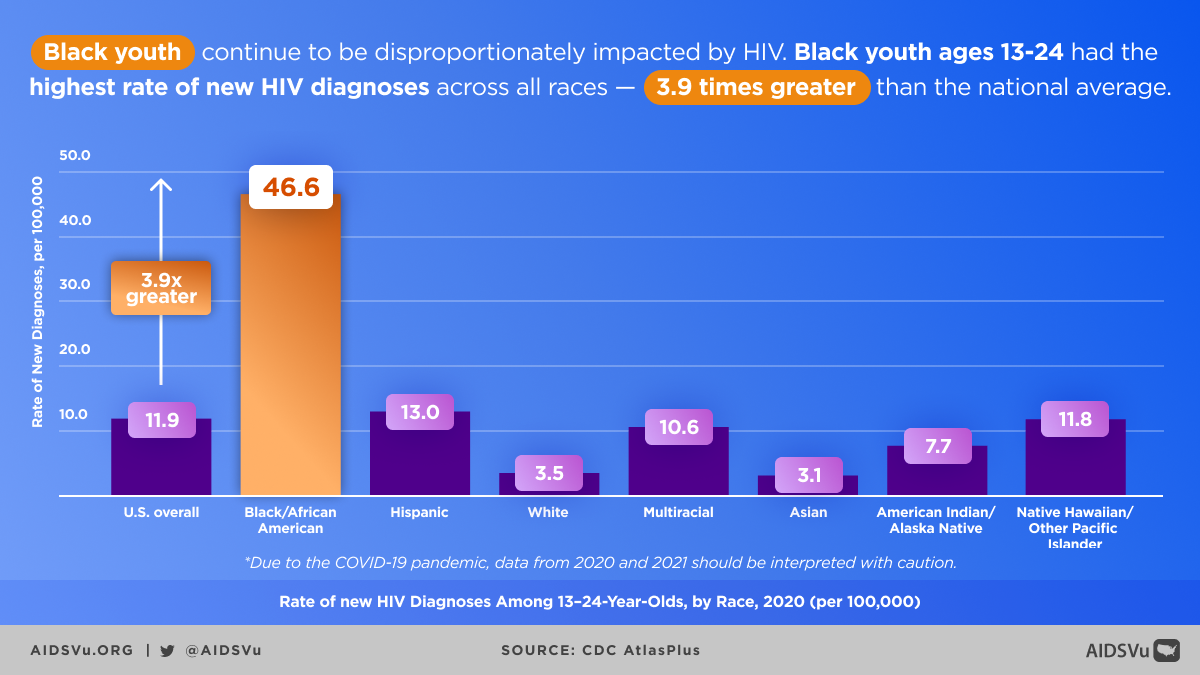
April 10 is National Youth HIV/AIDS Awareness Day (NYHAAD), a day to educate the public on the impact of HIV on youth, especially young people of color.
In 2021, despite efforts to reduce transmission, youth still accounted for more than 19% of all new HIV diagnoses nationwide.
HIV disproportionately impacts Black youth. In 2021, 53% of new HIV diagnoses among youth were among Black people. The disparity is even more stark among young Black women—in 2020, over 61% of young women living with HIV were Black.
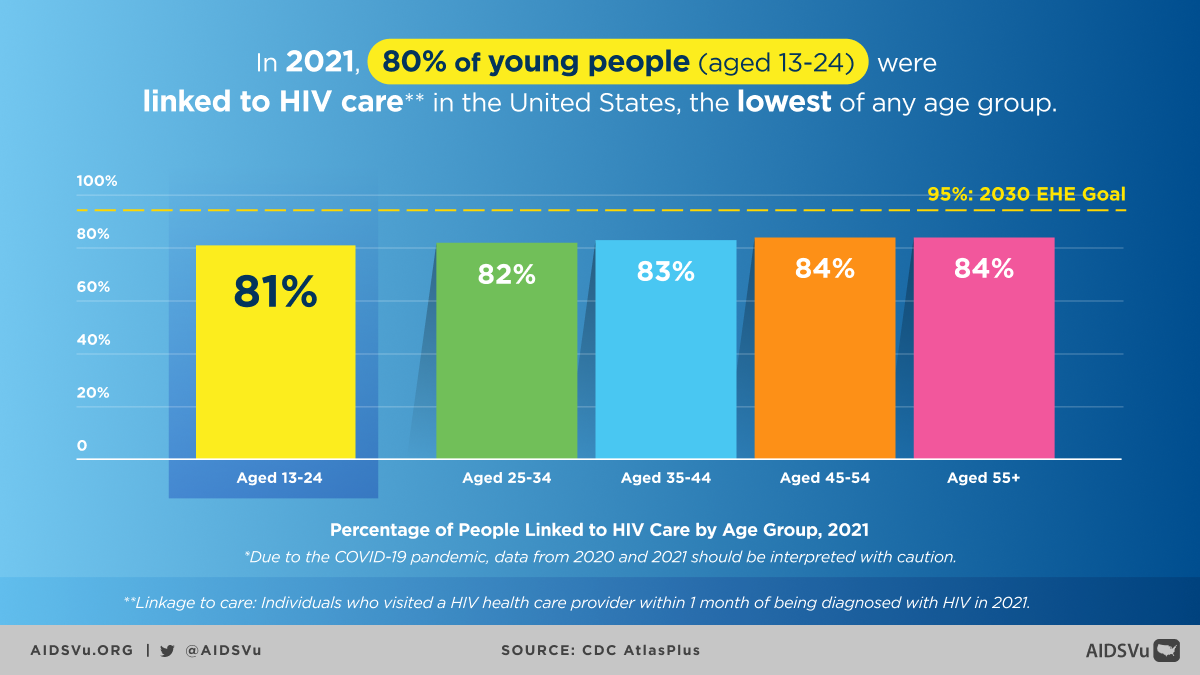
Pre-exposure prophylaxis (PrEP) is a valuable tool in HIV prevention – in 2021, young people under age 24 accounted for 19% of new HIV diagnoses but only 13% of PrEP users. In addition, young people face challenges in accessing and maintaining HIV treatment – only 81% of young people (aged 13-24) were linked to HIV care in 2021, the lowest rate of any age group.
In 2020, only 27% of 18-24-year-olds reported having been tested for HIV
Far lower than the national average.
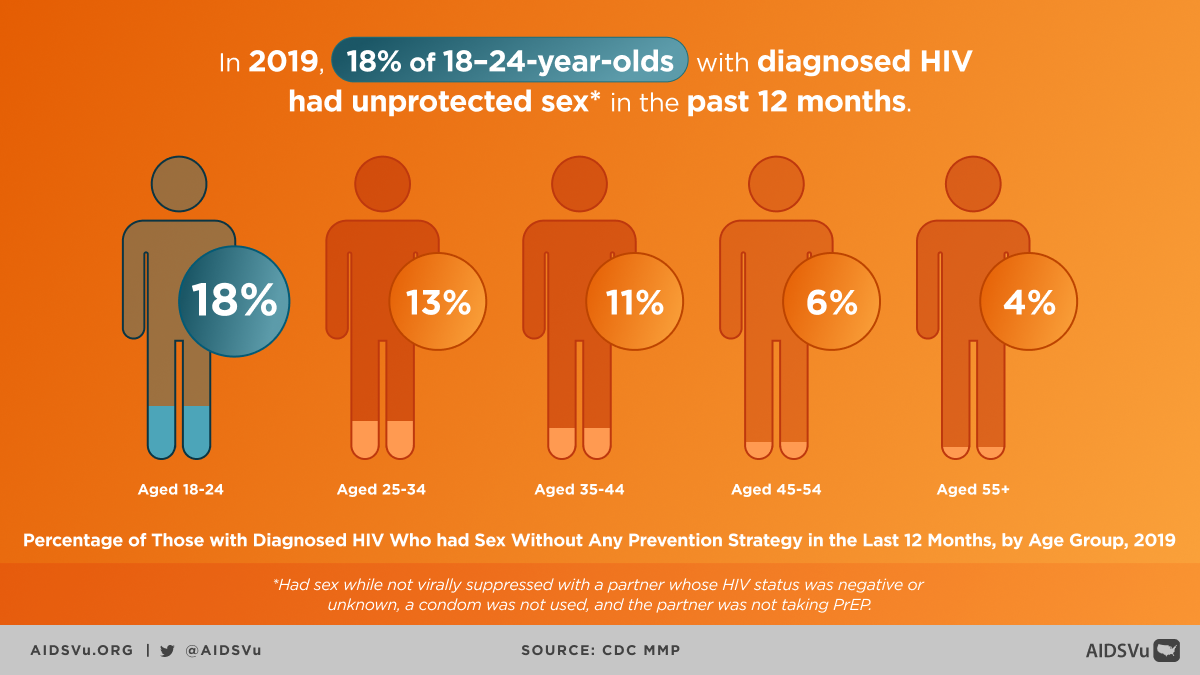
To learn more about how the HIV epidemic impacts youth, explore these AIDSVu resources:
- Visualize HIV data stratified by age at the city-, county-, and state-level on AIDSVu’s interactive maps.
- Explore our local data profiles to learn about HIV/AIDS in your area.
- Find available HIV testing and care services near you with AIDSVu’s service locators.
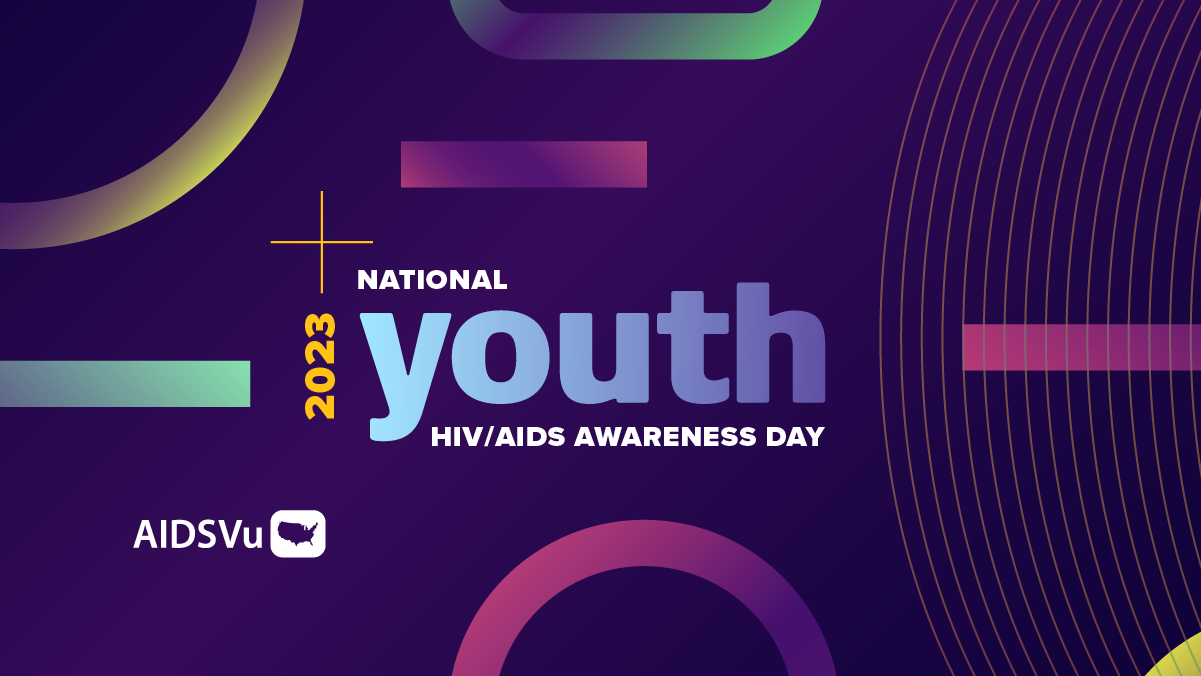
On April 10, AIDSVu recognizes National Youth HIV/AIDS Awareness Day (NYHAAD), a day dedicated to raising awareness about the impact of HIV/AIDS on youth, especially young people of color. This day focuses on educating the public about HIV prevention, testing, and treatment and addresses the stigma that can prevent young people from reaching out for care. Today also serves as an opportunity to encourage young people to take charge of their sexual health and get tested for HIV.
Our motto is YOU ASKED FOR IT, WE LISTENED, WE GOT IT!
The importance of your input, feedback, and suggestions is critical in providing what you feel is necessary and will benefit you!
Please give us your input, which we use to provide the best services for YOU and our communities.
